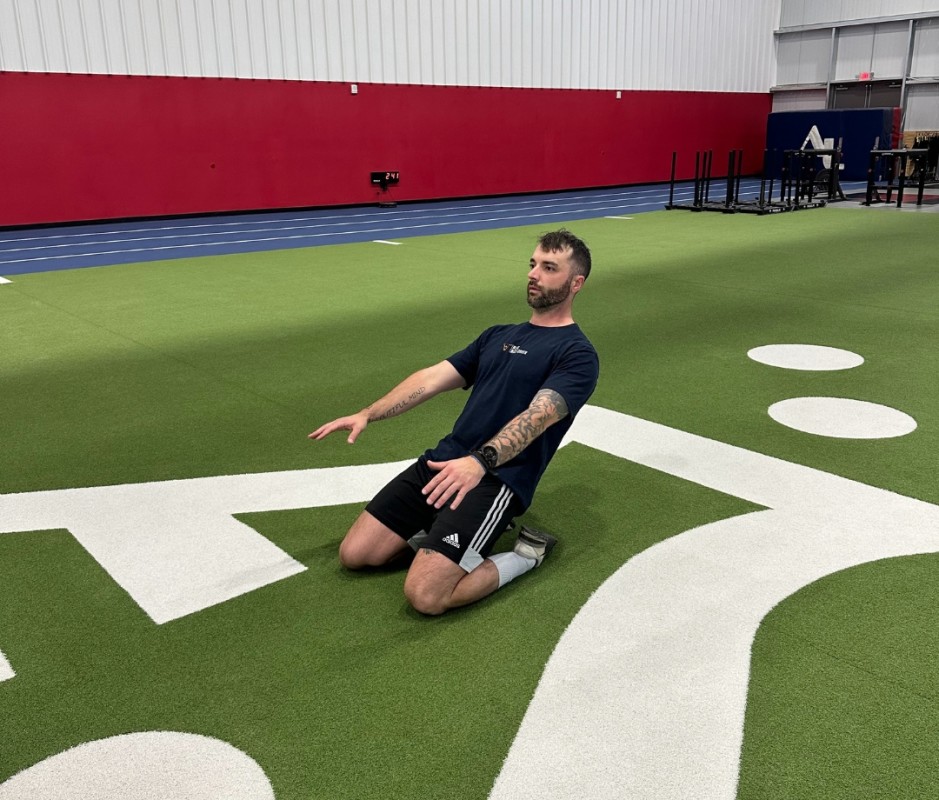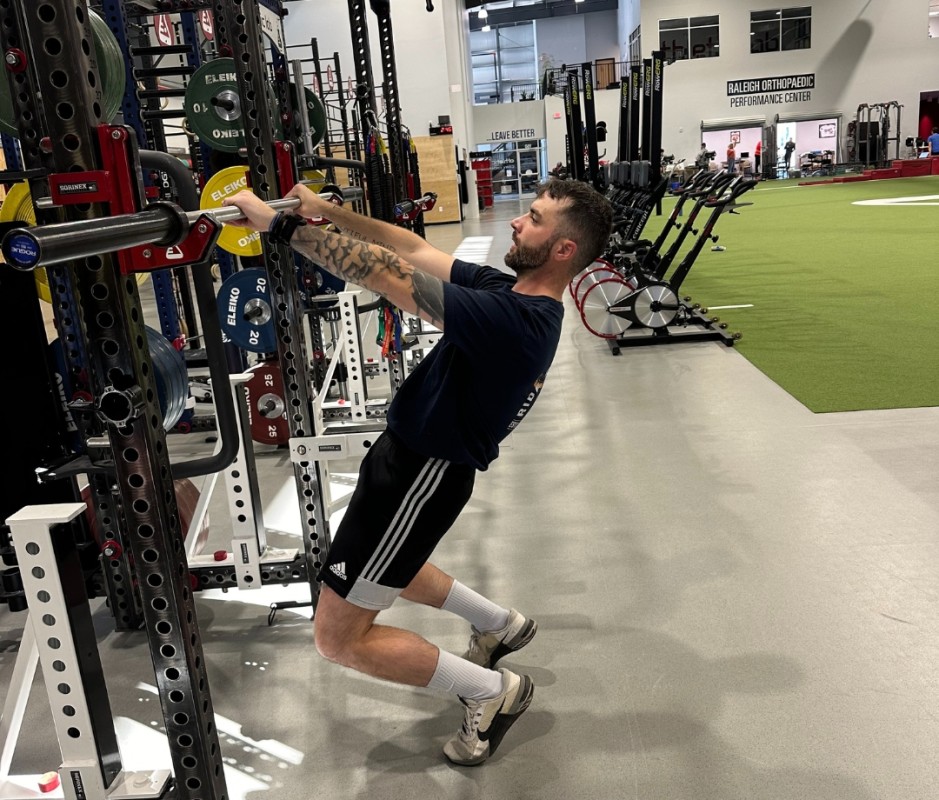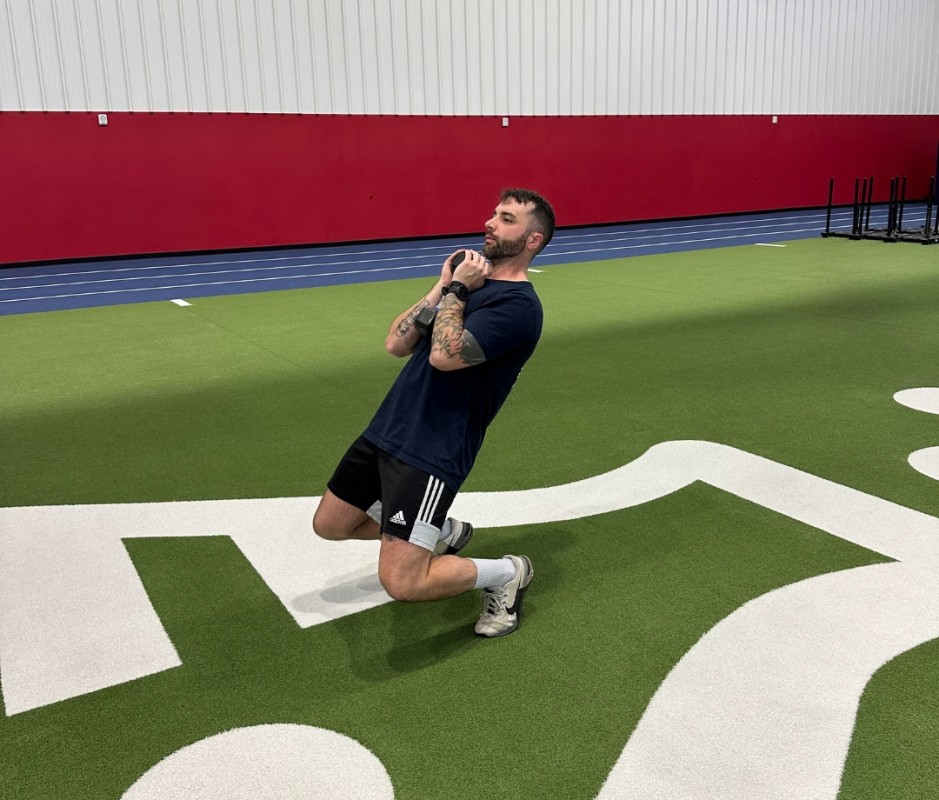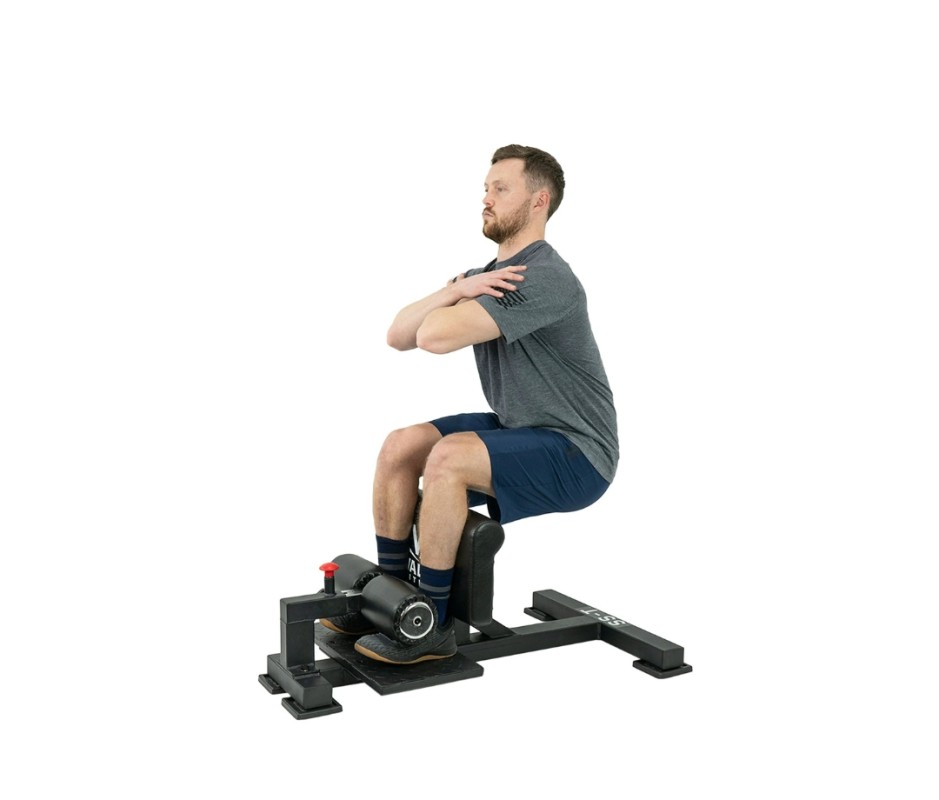Sissy Squats: The Secret Weapon for Leg Strength and Mobility
Sissy squats may sound like a move that belongs on a playground, but trust me—there’s nothing “sissy” about this killer lower-body exercise. In fact, aside from pistol squats and cossack squats, sissy squats are one of the most intense, muscle-shaping moves you can add to your leg-day arsenal. If you’ve been searching for a way to enhance your quad definition, build tendon strength, or improve your mobility without a ton of equipment, this move is for you. You might be wondering, what do sissy squats work?
Though it doesn’t involve heavy weights or flashy machines, the sissy squat isolates your quads like no other, and it’s a game-changer if you’re looking to boost your lower-body strength. Plus, sissy squats help improve your knee mobility and strengthen tendons in a way that most traditional squat variations don’t. And yes, they can be done right at home with nothing more than your body weight.
So, if you’re ready to dive into a squat variation that’s equal parts humbling and rewarding, allow me to break down everything you need to know about the mighty sissy squat. I’ll dish out my expertise covering what sissy squats are, how to do sissy squats, the muscles sissy squats work, and make sure you leave the page understanding the benefits and common mistakes to avoid. And, of course, we will squash the common question, “Are sissy squats bad for your knees?” (fun fact—they aren’t)!
What Are Sissy Squats?
At first glance, sissy squats might seem like an unusual or even risky movement. Unlike the familiar motion of a back squat, sissy squats require you to lean back with your knees bent while keeping your hips fully extended. This unique posture isolates your quadriceps, particularly the rectus femoris, forcing them to work harder than they would in traditional squats to lift your body back up.
What sets sissy squats apart is their ability to take the hips and glutes almost entirely out of the equation, placing the focus solely on the knee joint’s flexion. This isolation creates an intense burn in your quads, carving definition into your thighs while simultaneously engaging your core for added stability. It’s a deceptively simple-looking movement that challenges balance, coordination, and strength.
Mastering this move requires serious effort, but the rewards—stronger, more defined quads—are worth it. However, as you’re learning this exercise, don’t shy away from using assistance, such as holding onto a squat rack or using a TRX strap for support. This will help you maintain proper form and reduce the risk of injury while you build the strength and coordination needed to perform it unassisted.
Related: 50 Best Leg Exercises for 2024
How to Do Sissy Squats
Before jumping right into it, perfecting your sissy squat form is vital to getting all the benefits without risking injury. Here’s a step-by-step guide to nailing it:
1. Start With a Stable Base
- Stand tall with your feet about hip-width apart.
- Hold onto a sturdy object (like a door frame or squat rack) for balance, or perform the exercise hands-free if you’re confident.
2. Lean Back
- Slowly lean your torso backward while bending at the knees.
- Keep your hips extended, avoiding sitting back like in a regular squat.
- Your body should form a straight line from your knees to your shoulders as you lower yourself.
3. Lower Your Body
- Descend until your knees are close to the ground or as low as your flexibility allows.
- Keep your heels off the floor, balancing on the balls of your feet.
4. Return to the top
- Push through your quads to raise your body back to the starting position.
- Ensure your hips and shoulders remain aligned.
- Keep your core engaged and maintain control throughout the movement.
Pro Tip
If you’re new to sissy squats, start with a small range of motion, then gradually increase your depth as your strength and flexibility improve.
Related: How to Shadow Box to Lose Weight and Gain Muscle
What Muscles Do Sissy Squats Work?
You might be wondering, what do sissy squats work? The answer is relatively straightforward: sissy squats are a quad-dominant exercise, but they engage more than just your thighs. Here’s a breakdown of the muscles worked:
Quadriceps
This is the primary muscle group targeted. The isolated knee flexion and extension put intense focus on your quads, helping to build both size and strength.
Core
Your abs and lower back help stabilize your body throughout the movement, especially as you lean back.
Hip Flexors
While not the primary movers, your hip flexors play a supporting role in controlling the motion.
Calves
As you balance on the balls of your feet, your calves help stabilize your body, particularly during the lowering phase.
Related: The 30 Best Bodyweight Exercises for Men
Benefits of Sissy Squats
The sissy squat packs a punch with numerous benefits, which is why it’s worth the effort to incorporate it into your workout routine:
Quad Isolation
Sissy squats isolate the quadriceps like few other exercises can. You can focus almost entirely on working your quads by eliminating the hip involvement.
Improved Knee Health
Contrary to the common question, “Are sissy squats bad for your knees?” they can actually improve knee strength and stability. When done correctly, sissy squats strengthen the tendons and ligaments around the knee joint, making them a beneficial exercise for knee health.
Increased Flexibility
Sissy squats challenge your flexibility, especially in the quads and hip flexors, making them an excellent movement for improving mobility.
Minimal Equipment
You don’t need much to perform sissy squats at home. This exercise requires little more than your body weight, making it convenient and effective whether you’re at home or in the gym.
Enhances Core Stability
Balancing through the entire motion forces your core to engage, making this a full-body movement in disguise.
Related: These At-Home Leg Workouts Prove You Don’t Need a Full Gym
Common Sissy Squat Mistakes
Like any exercise, sissy squats come with their own set of common mistakes that can reduce effectiveness or even lead to injury. Here’s what to watch out for:
Dropping the Hips
One of the most significant errors is letting your hips drop backward like a traditional squat. Dropping your hips takes the tension off your quads and shifts it to your glutes and hips, defeating the purpose of the exercise.
Rushing the Movement
Sissy squats should be done slowly and with control. Going too fast makes it easy to lose balance and proper form.
Not Using Assistance
If you’re struggling to maintain balance, don’t hesitate to use a chair or squat rack support. Trying to go unsupported too soon can lead to improper form and reduce the exercise’s effectiveness.
Related: Best Resistance Band Workouts: 30 Moves That Prove You Don’t Need a Full Gym
Sissy Squat Variations
Whether you’ve mastered the standard sissy squat or need to dial it back to improve technique, there are a few variations you can try to mix things up:
Kneeling Sissy Squat

Jarrod Nobbe
How to Do It
- Start in a tall kneeling position, ensuring your knees are below your hips and tucking your toes under your heels.
- Squeeze your glutes and engage your anterior core to stabilize your body throughout the movement.
- Slowly lean back, allowing your glutes to move toward your heels while maintaining a straight torso.
- Focus on keeping your body aligned and avoid rounding your back.
- Lower yourself until you reach your desired depth, ensuring your knees stay above your toes for proper form.
- Drive through your knees and quads to return to the tall kneeling position.
- Keep your movements controlled to maximize muscle engagement and avoid injury.
- Aim for 3 sets of 6 to 8 reps.
Assisted Sissy Squats

Jarrod Nobbe
How to Do It
- Use a resistance band or TRX suspension trainer for support, to start.
- Attach the resistance band to a sturdy anchor point at waist height or hold onto the TRX straps.
- Stand tall with your feet hip-width apart and grasp the band or straps with both hands.
- Squeeze your glutes and engage your core to stabilize your body before beginning the squat.
- Slowly lean back while bending your knees, allowing the band or straps to assist your balance.
- Keep your hips extended, ensuring your body forms a straight line from your knees to your shoulders.
- Lift your heels off the ground, balancing on the balls of your feet, and lower yourself until your knees are nearly touching the ground or as low as you can comfortably go.
- Push through your quads to return to the starting position, ensuring your hips and shoulders remain aligned.
- Perform 3 sets of 6 to 12 reps, focusing on maintaining control and proper form with each repetition.
Weighted Sissy Squats

Jarrod Nobbe
How to Do It
- Choose a light dumbbell or kettlebell, to start.
- Stand with feet hip-width apart and hold the weight at your chest with both hands, elbows tucked in.
- Engage your core for stability.
- Lean your torso backward while bending at the knees, keeping your hips extended.
- Your body should form a straight line from your knees to your shoulders.
- Lift your heels off the ground, balancing on the balls of your feet, and lower yourself until your knees are close to the ground or as low as you can comfortably go.
- Push through your quads to rise back up, ensuring your hips and shoulders remain aligned.
- Perform 3 sets of 10 to 15 reps, gradually increasing the weight as you build strength.
Sissy Squat Machine

Courtesy Image
How to Do It
- Find a sissy squat machine at your gym, to start.
- Step onto the foot pads with your feet securely positioned, keeping your heels slightly elevated.
- Grip the handles or support bars for stability.
- Lean back while keeping your hips extended. The machine will help support your weight.
- Lower yourself until your knees approach the ground or as low as your flexibility allows.
- Push through your quads to return to the starting position, maintaining alignment between your hips and shoulders.
- Aim for three sets of 10 to 15 reps, adjusting the machine for comfort as needed.

